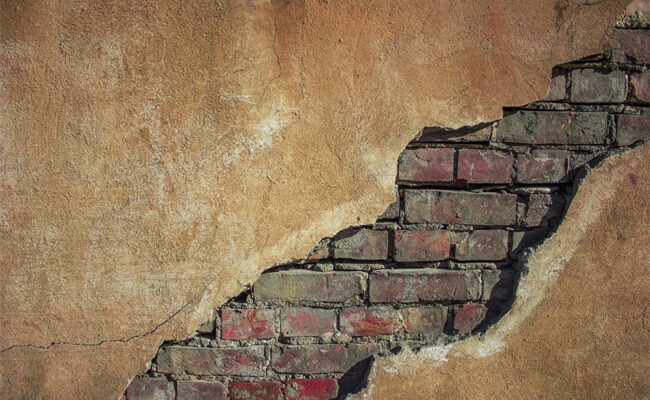
“I’ll huff, and I’ll puff, and I’ll blow your house down.”
Those were the famous last words from the Big Bad Wolf when he tried to knock over a brick house with his monstrous breath. The fact that he couldn’t do it illustrates how formidable a house with brick walls really is.
But what if cracks begin to show in one of the walls? Not all cracks in brick walls are the same, but they’re all a cause for worry if you’re a homeowner. Some are purely cosmetic, while other types of cracks that are symptoms of more significant issues, such as structural or foundation problems.
How do you know which is which? Below, we detail the different cracks and what they might mean for your home.
Hairline Cracks
Small cracks can appear on your external or internal walls, but they’re usually not a cause for alarm. Usually, these are cosmetic cracks due to the frame experiencing a slight contraction or expansion. This event can happen during a seasonal change.
The small cracks in bricks are easily fixed but don’t make the mistake of ignoring them. If neglected, they can turn into a more serious problem over time.
A Vertical Crack in Brick
Three things can explain vertical breaks in the wall: heat, moisture, and foundation settling.
The first is thermal expansion across a brick wall due to heat. Thermal expansion can cause a gap to form at vertical brick mortar joints. Similarly, moisture can result in individual brick pieces expanding to create a split in the wall.
Foundation settlement is another cause of vertical cracks. Typically, these cracks are wider at the top and taper off at the bottom.
If you see a vertical crack, have it looked at by a professional immediately.
Horizontal Cracks in Brick Wall
If the horizontal fissure is located near the top of the wall, it may be due to rusting of the steel beam. As the steel rusts, it can push the bricks out of place. Because bricks are porous, moisture can enter without difficulty to corrode the steel.
If the crack is at the bottom, it’s more likely to be a foundation problem due to weak soil. One example is if your home rests on clay soil. According to Herndon’s Trusted Foundation Repair Company, your home may be prone to structural or foundation issues.
A horizontal crack signals that the wall may give way soon. Call a professional right away.
Stair-Step Cracks
Stair-step cracks are a classic sign of foundation settling. The diagonal direction demonstrates that your foundation is becoming uneven. This means that some sections of the foundation are sinking into the ground.
Due to its structural nature, it’s vital to have an expert diagnose what’s wrong as soon as possible. They may have to excavate your foundation and inject new concrete to correct the defect.
When to Worry About Cracks in Brick Homes
Any significant cracks in brick walls should warrant a visit from a professional. While a brick wall is undoubtedly strong, the cracks often represent an underlying issue, such as a problem with the foundation.
For more home improvement tips, please feel free to browse our site.
Leave a Reply